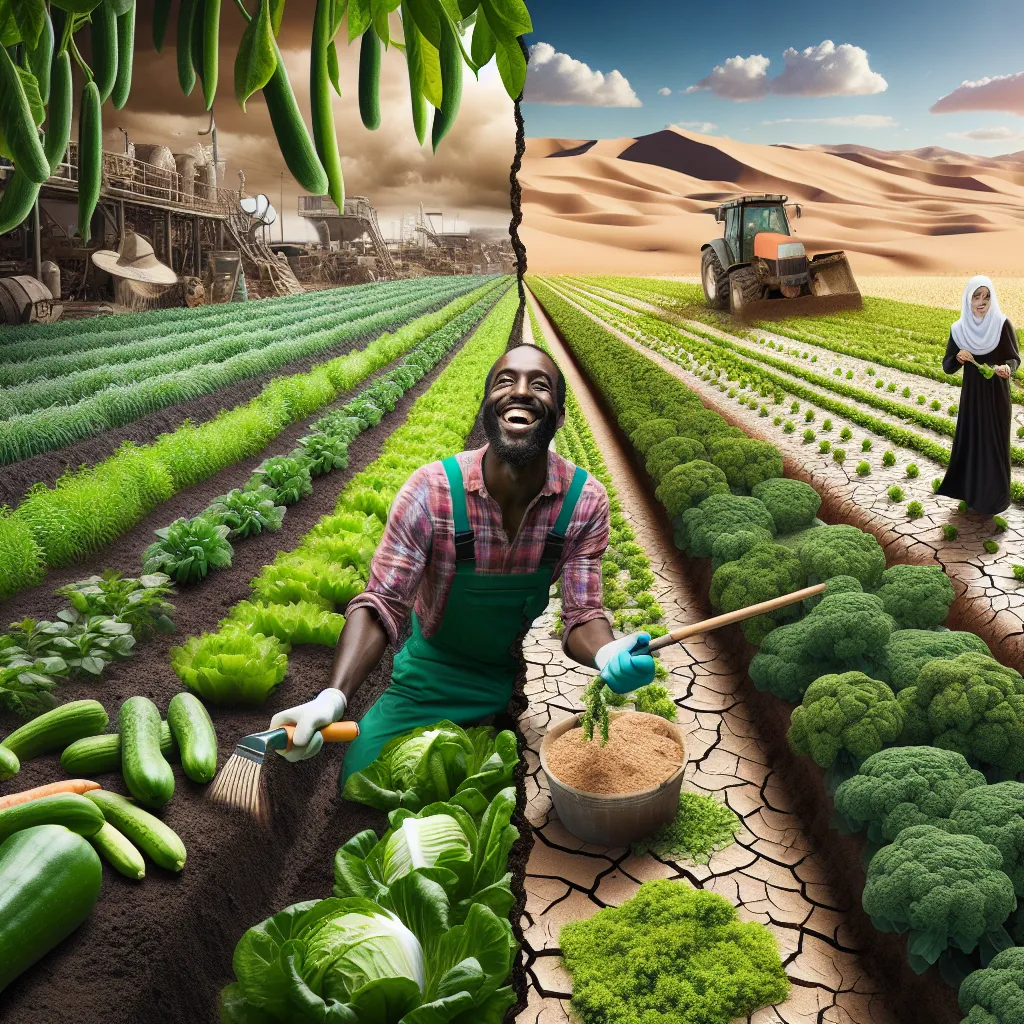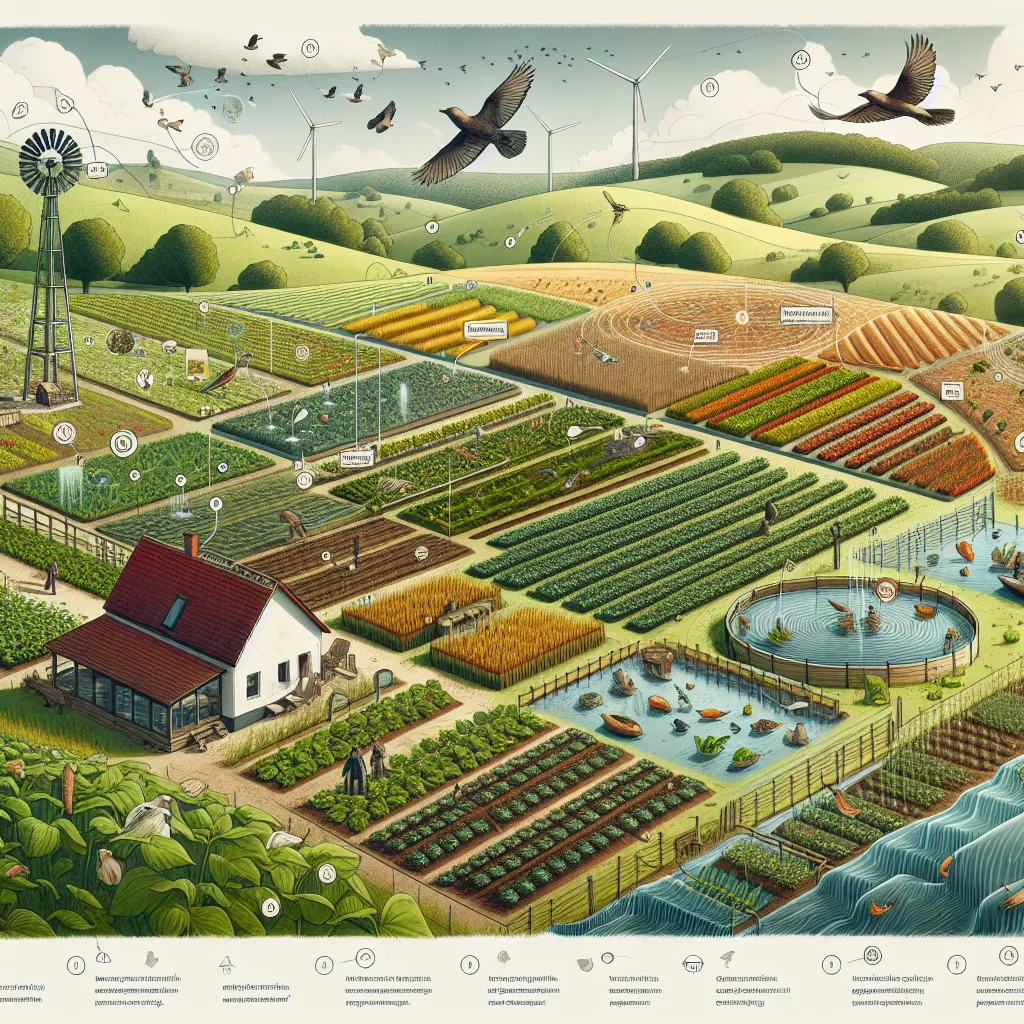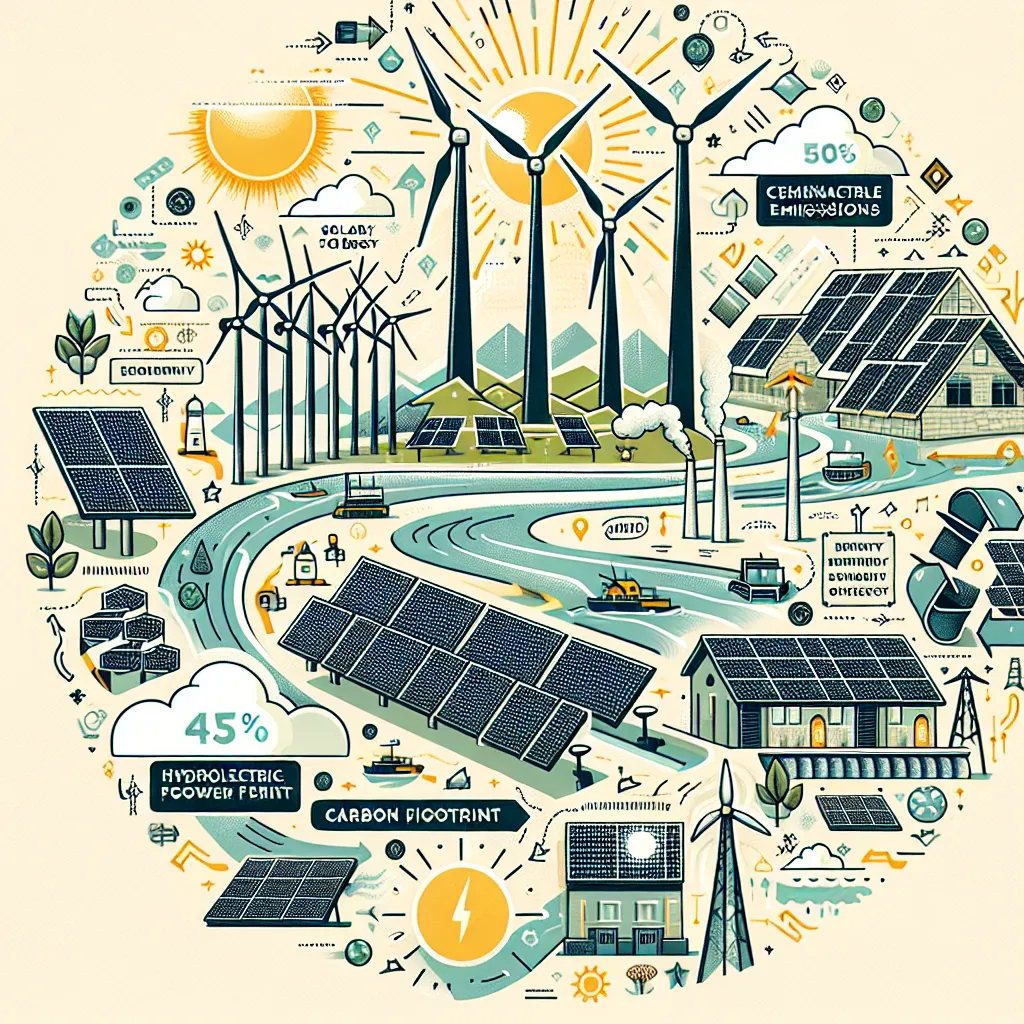Climate change and its impact on global food security is a crucial topic that frequently appears in IELTS Reading tests. As an experienced IELTS instructor, I’ve prepared a comprehensive practice test to help you sharpen your skills and expand your knowledge on this important subject. This practice test follows the standard IELTS Reading format, consisting of three passages of increasing difficulty, accompanied by a variety of question types.
 Climate change affecting global food security
Climate change affecting global food security
IELTS Reading Practice Test
Passage 1 – Easy Text
Climate change is one of the most pressing issues of our time, with far-reaching consequences for every aspect of human life. Among these, its impact on global food security is particularly concerning. As temperatures rise and weather patterns become more unpredictable, agricultural systems worldwide are facing unprecedented challenges.
The Intergovernmental Panel on Climate Change (IPCC) has warned that climate change is already affecting food security through increasing temperatures, changing precipitation patterns, and greater frequency of some extreme events. These changes can lead to reduced crop yields, decreased nutritional quality of food, and disruptions in food supply chains.
One of the most immediate effects of climate change on agriculture is the alteration of growing seasons. Many crops are sensitive to temperature and rainfall, and even small changes can significantly impact their growth and yield. For example, heat waves during critical growth stages can lead to crop failure, while extended periods of drought can reduce overall agricultural productivity.
Moreover, climate change is exacerbating water scarcity in many regions. As rainfall patterns shift and glaciers melt, traditional water sources for irrigation are becoming less reliable. This is particularly problematic in arid and semi-arid areas, where agriculture is heavily dependent on irrigation.
The impact of climate change on food security is not limited to crop production. Livestock, fisheries, and aquaculture are also affected. Rising temperatures and changing ocean conditions can lead to shifts in fish populations, potentially disrupting local fishing industries and food supplies. Similarly, heat stress can reduce livestock productivity and increase susceptibility to diseases.
It’s important to note that the effects of climate change on food security are not evenly distributed. Developing countries, particularly those in tropical and subtropical regions, are often more vulnerable due to their geographical location and limited resources for adaptation. This uneven impact threatens to exacerbate existing inequalities in global food distribution and access.
Questions 1-5
Do the following statements agree with the information given in the reading passage?
Write
TRUE if the statement agrees with the information
FALSE if the statement contradicts the information
NOT GIVEN if there is no information on this
- Climate change only affects food production in developing countries.
- The IPCC has stated that climate change is already impacting food security.
- Heat waves can cause crop failure if they occur during important growth periods.
- Climate change has no effect on the nutritional quality of food.
- Fishing industries may be disrupted due to changes in fish populations caused by climate change.
Questions 6-10
Complete the sentences below.
Choose NO MORE THAN TWO WORDS from the passage for each answer.
- Climate change is causing ___ patterns to become more unpredictable.
- In arid and semi-arid areas, agriculture heavily relies on ___.
- Rising temperatures can cause ___ in livestock, reducing their productivity.
- The impact of climate change on food security may worsen existing ___ in global food distribution.
- Developing countries in ___ and subtropical regions are often more vulnerable to the effects of climate change on food security.
Passage 2 – Medium Text
The intricate relationship between climate change and global food security extends beyond mere production issues, encompassing a complex web of socio-economic and environmental factors. As the planet continues to warm, the cascading effects on food systems are becoming increasingly apparent and alarming.
One of the most significant challenges posed by climate change is the increased frequency and intensity of extreme weather events. Hurricanes, floods, and droughts are occurring with greater regularity, often in regions crucial for global food production. These events can devastate crops, destroy infrastructure, and disrupt supply chains, leading to food shortages and price volatility in both local and global markets.
Moreover, climate change is altering the very foundations of agriculture. Rising temperatures are shifting agricultural zones, forcing farmers to adapt their practices or relocate entirely. In some regions, traditional crops are no longer viable, necessitating a transition to more resilient varieties or entirely different crops. This adaptation process is often costly and time-consuming, placing additional strain on already vulnerable communities.
The impact of climate change on soil health is another critical concern. Increased temperatures and changing precipitation patterns can accelerate soil degradation, reducing its fertility and water-holding capacity. This degradation not only affects crop yields but also diminishes the soil’s ability to sequester carbon, further exacerbating climate change in a vicious cycle.
Pest and disease patterns are also evolving in response to changing climatic conditions. Warmer temperatures can lead to the expansion of pest ranges and the emergence of new crop diseases. This phenomenon not only threatens food production but also increases reliance on pesticides and other chemical interventions, potentially compromising food safety and environmental health.
The global nature of food systems means that climate-induced disruptions in one region can have far-reaching consequences. For instance, droughts or floods in major grain-producing countries can lead to global price spikes, disproportionately affecting food-importing nations and vulnerable populations. This interconnectedness underscores the need for a coordinated global response to climate change and food security challenges.
Adaptation and mitigation strategies are crucial in addressing the impact of climate change on food security. These include developing climate-resilient crop varieties, implementing sustainable farming practices, improving water management systems, and diversifying food production. Additionally, reducing food waste and shifting towards more plant-based diets can help alleviate pressure on agricultural systems and reduce greenhouse gas emissions.
However, it’s important to recognize that technological solutions alone are insufficient. Addressing the root causes of climate change through reduced carbon emissions and sustainable development practices is essential for long-term food security. This requires concerted efforts from governments, businesses, and individuals worldwide.
Questions 11-14
Choose the correct letter, A, B, C, or D.
-
According to the passage, extreme weather events caused by climate change:
A) Only affect local food markets
B) Have no impact on food prices
C) Can lead to food shortages and price volatility
D) Are decreasing in frequency -
The adaptation process for farmers facing climate change is described as:
A) Quick and easy
B) Costly and time-consuming
C) Unnecessary
D) Beneficial for all communities -
The passage suggests that soil degradation due to climate change:
A) Improves crop yields
B) Has no effect on carbon sequestration
C) Reduces soil fertility and water-holding capacity
D) Only occurs in cold climates -
The text indicates that the global nature of food systems means:
A) Climate-induced disruptions have no international impact
B) Food-importing nations are unaffected by climate change
C) Disruptions in one region can affect food security globally
D) All countries are equally resilient to food system shocks
Questions 15-19
Complete the summary below.
Choose NO MORE THAN TWO WORDS from the passage for each answer.
Climate change is having profound effects on global food security. Extreme weather events such as (15) , floods, and droughts are becoming more common, particularly in key food-producing areas. Rising temperatures are causing shifts in (16) , forcing farmers to adapt or move. Climate change also affects (17) , potentially reducing fertility and water retention. Furthermore, changing climatic conditions are altering (18) patterns, which can threaten food production and increase reliance on chemical interventions. To address these challenges, various strategies are needed, including developing resilient crops, implementing (19) ___ farming practices, and improving water management.
Passage 3 – Hard Text
The nexus between climate change and global food security represents one of the most formidable challenges of the 21st century, encompassing a multitude of interconnected issues that span environmental, social, economic, and political domains. As the Earth’s climate system undergoes unprecedented changes, the ramifications for food production, distribution, and access are becoming increasingly complex and far-reaching.
The anthropogenic forcing of the climate system, primarily through greenhouse gas emissions, is altering fundamental atmospheric and oceanic processes that have long underpinned global agricultural systems. The resultant changes in temperature regimes, precipitation patterns, and the frequency and intensity of extreme weather events are not merely disrupting current agricultural practices but are also challenging our very understanding of food security paradigms.
One of the most insidious aspects of climate change’s impact on food security is its potential to exacerbate existing inequalities and vulnerabilities. While climate change is a global phenomenon, its effects are disproportionately felt by marginalized communities and developing nations. These populations often lack the resources and infrastructure to effectively adapt to changing conditions, leading to a compounding of food insecurity risks. This disparity in adaptive capacity threatens to widen the gap between food-secure and food-insecure populations, potentially leading to increased social unrest and geopolitical instability.
The issue of climate change and food security is further complicated by the bidirectional nature of their relationship. While climate change significantly impacts food production, agricultural practices themselves contribute substantially to greenhouse gas emissions. This creates a feedback loop where efforts to increase food production to meet growing demand can potentially accelerate climate change, further threatening long-term food security. Breaking this cycle requires a fundamental rethinking of agricultural systems, emphasizing sustainability and resilience over short-term productivity gains.
Moreover, the impact of climate change on food security extends beyond primary production to encompass the entire food value chain. Changes in temperature and humidity can affect food storage and transportation, potentially leading to increased post-harvest losses and food safety risks. Climate-induced disruptions to infrastructure and energy systems can further compromise food processing and distribution networks, highlighting the need for a holistic approach to climate adaptation in the food sector.
The challenge of maintaining global food security in the face of climate change also intersects with other critical issues such as biodiversity loss, water scarcity, and land degradation. Climate change is altering ecosystems at an unprecedented rate, threatening the genetic diversity that underpins agricultural resilience. Similarly, changes in water availability and soil quality due to climate change can have cascading effects on food production systems, necessitating innovative approaches to resource management and conservation.
Addressing these multifaceted challenges requires a paradigm shift in how we conceptualize and approach food security. Traditional models of agricultural intensification may no longer be sufficient or sustainable in a changing climate. Instead, there is a growing recognition of the need for transformative changes in food systems, encompassing not only technological innovations but also social, economic, and policy reforms.
Agroecological approaches, which emphasize the integration of ecological principles in agricultural management, offer promising avenues for enhancing resilience to climate change while maintaining productivity. These approaches often incorporate traditional knowledge and practices, recognizing the value of diverse, locally adapted farming systems in mitigating climate risks.
Similarly, the concept of climate-smart agriculture has gained traction as a framework for developing agricultural strategies that simultaneously address food security, climate change adaptation, and mitigation. This approach emphasizes practices that increase productivity sustainably, enhance resilience, and reduce greenhouse gas emissions where possible.
However, technological and agricultural innovations alone are insufficient to address the complex challenges at the intersection of climate change and food security. There is a critical need for transformative policies and governance structures that can facilitate systemic changes in food systems. This includes rethinking global trade policies, investing in climate-resilient infrastructure, and developing robust social protection mechanisms to safeguard vulnerable populations against climate-induced food insecurity.
Furthermore, addressing the climate-food security nexus requires unprecedented levels of international cooperation and coordination. Climate change does not respect national boundaries, and its impacts on food systems are inherently transnational. Collaborative research, technology transfer, and shared policy frameworks are essential for developing effective, globally coherent responses to these challenges.
In conclusion, the relationship between climate change and global food security represents a complex, multidimensional challenge that touches on virtually every aspect of human society and the natural environment. Addressing this challenge will require innovative, integrated approaches that span disciplines, sectors, and national boundaries. As we navigate the uncertainties of a changing climate, ensuring global food security remains not just an agricultural or environmental issue, but a fundamental imperative for human development and global stability.
Questions 20-23
Choose the correct letter, A, B, C, or D.
-
The passage describes the relationship between climate change and food security as:
A) Simple and straightforward
B) Primarily beneficial
C) Complex and multifaceted
D) Easily solvable with current technology -
According to the text, the impact of climate change on food security:
A) Affects all populations equally
B) Is more severe in developed countries
C) Disproportionately affects marginalized communities
D) Has no effect on geopolitical stability -
The bidirectional nature of climate change and food security refers to:
A) The fact that they are unrelated issues
B) Climate change affecting food production and agriculture contributing to climate change
C) Food security always improving with climate change
D) Agricultural practices having no impact on climate change -
The passage suggests that addressing climate change and food security challenges requires:
A) Focusing solely on increasing agricultural productivity
B) Maintaining current agricultural practices
C) A holistic approach including technological, social, and policy changes
D) Ignoring traditional farming knowledge
Questions 24-26
Complete the sentences below.
Choose NO MORE THAN THREE WORDS from the passage for each answer.
- Climate change is altering ecosystems rapidly, which threatens the ___ that is crucial for agricultural resilience.
- The text mentions ___ as a promising approach that integrates ecological principles into agricultural management.
- The concept of ___ aims to develop strategies that address food security, climate adaptation, and mitigation simultaneously.
Questions 27-30
Do the following statements agree with the claims of the writer in the reading passage?
Write
YES if the statement agrees with the claims of the writer
NO if the statement contradicts the claims of the writer
NOT GIVEN if it is impossible to say what the writer thinks about this
- Traditional models of agricultural intensification are sufficient to address food security in a changing climate.
- Climate-smart agriculture focuses on increasing productivity at the expense of environmental considerations.
- Technological innovations alone can solve all the challenges at the intersection of climate change and food security.
- International cooperation is essential for developing effective responses to climate change and food security challenges.
Answer Key and Explanations
Passage 1
-
FALSE – The passage states that the effects are not evenly distributed, but it doesn’t say they only affect developing countries.
-
TRUE – The passage directly states this information.
-
TRUE – The text mentions that heat waves during critical growth stages can lead to crop failure.
-
FALSE – The passage mentions that climate change can lead to decreased nutritional quality of food.
-
TRUE – The text states that changing ocean conditions can lead to shifts in fish populations, potentially disrupting local fishing industries.
-
weather
-
irrigation
-
heat stress
-
inequalities
-
tropical
Passage 2
-
C – The passage states that extreme weather events can lead to food shortages and price volatility in both local and global markets.
-
B – The text describes the adaptation process as costly and time-consuming.
-
C – The passage mentions that soil degradation reduces fertility and water-holding capacity.
-
C – The text indicates that disruptions in one region can have far-reaching consequences globally.
-
Hurricanes
-
agricultural zones
-
soil health
-
pest and disease
-
sustainable
Passage 3
-
C – The passage describes the relationship as complex and multifaceted, touching on various aspects of society and the environment.
-
C – The text states that the effects are disproportionately felt by marginalized communities and developing nations.
-
B – The passage explains that climate change affects food production, while agricultural practices contribute to climate change.
-
C – The text emphasizes the need for a holistic approach including technological, social, economic, and policy reforms.
-
genetic diversity
-
Agroecological approaches
-
climate-smart agriculture
-
NO – The passage suggests that traditional models may no longer be sufficient or sustainable.
-
NO – The text describes climate-smart agriculture as addressing food security, adaptation, and mitigation simultaneously, not at the expense of environmental considerations.
-
NO – The passage explicitly states that technological innovations alone are insufficient.
-
YES – The text directly states that international cooperation is essential for developing effective responses.
Conclusion
This practice test on climate change and its impact on global food security covers a wide range of aspects related to this crucial topic. By working through these passages and questions, you’ve not only improved your IELTS Reading skills but also gained valuable insights into one of the most pressing issues of our time. Remember to apply the reading strategies we’ve discussed, such as skimming for main ideas, scanning for specific information, and carefully analyzing the language used in both the passages and questions.
For more practice on related topics, you might want to check out our articles on the effects of climate change on food security and the role of sustainable farming in reducing carbon emissions. These resources will help you further expand your vocabulary and understanding of environmental issues commonly found in


